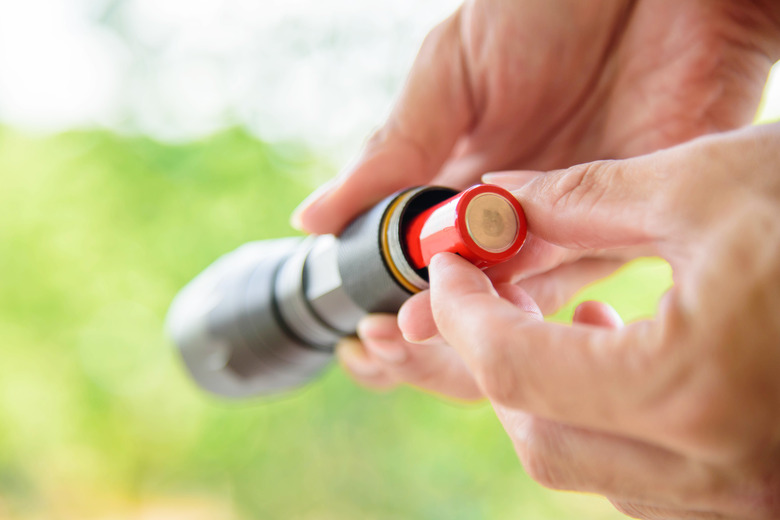How To Remove Battery Acid From A Flashlight
We may receive a commission on purchases made from links.
The power goes out and you reach for your flashlight — but it doesn't work. While fixing a dead flashlight usually just requires replacing the batteries, old alkaline batteries may have leaked inside the battery compartment. It's relatively simple to remove battery acid from a flashlight when you use a few safety precautions and a little white vinegar or lemon juice.
Take Safety Precautions
Take Safety Precautions
Batteries used in flashlights don't actually leak acid — it's an alkaline potassium hydroxide compound, thus the label "alkaline batteries." Despite that important difference, the leaking substance is caustic and can damage your eyes and skin. Put on chemical-resistant gloves and safety goggles before you begin to clean the flashlight.
Cover your work surface with a disposable plastic tablecloth or several layers of newspaper. Shoo any children, pets and bystanders out of the room until the job is done.
Take Out the Leaking Battery
Take Out the Leaking Battery
Open the flashlight battery compartment by unscrewing the cap and turn it upside down. If you're lucky, the old batteries will fall out. However, sometimes one or both batteries have swollen inside the case or have fused to the metal contacts inside the flashlight. Removing the battery will take a little extra work.
Try using needle-nose pliers to grasp and pull the battery. Twist and tug gently. If that doesn't work, try filling in around the batteries with white vinegar and let it sit for several hours. Then, try twisting and tugging on the batteries until they pop loose.
If the batteries are so swollen that you can't get any vinegar into the case and you can't loosen them by pulling or twisting, it's unlikely that you'll be able to get the batteries out of the flashlight without destroying the case. Put the whole thing into a plastic bag and check the battery manufacturer's website. If the company has a no-leak guarantee, contact the company because it may repair or replace your expensive flashlight.
Remove the Battery Acid
Remove the Battery Acid
Once the batteries are out of the compartment, you'll see a white powder or a rusty liquid residue. Wipe out what you can with a rag and then cover the contacts both inside the compartment and on the screw-on cap with a few drops of white vinegar.
The vinegar will neutralize the alkaline residue. When the fizzing stops, use a clean cotton swab or an old toothbrush to clean the contacts. If they're corroded, use a small wire brush, emery board or metal nail file to scrape off the corrosion. Finally, polish with a pencil eraser.
Allow the flashlight to completely dry before putting new batteries into the battery compartment. Turn it on to make sure that it works. Store the flashlight and batteries at room temperature, preferably not in a hot glovebox or workshop.
Dispose of the Old Batteries
Dispose of the Old Batteries
Check with your local sanitation department before discarding old flashlight batteries. While some cities allow you to toss alkaline batteries in the trash, others have specific guidelines for battery disposal and/or recycling. Alkaline batteries manufactured after 1996 don't contain mercury. If you found some pre-1996 batteries in the bottom of the kitchen junk drawer or in the garage, contact the city or sanitation department for more information on proper disposal.
